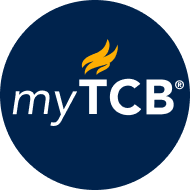
Once the Carbon Border Adjustment Mechanism comes fully into force, the EU will charge importers for emissions generated by six carbon-intensive products.
learn moreFrom October 1, 2023, the EU will introduce the Carbon Border Adjustment Mechanism (CBAM), a scheme that taxes imports into the EU of six carbon-intensive industrial sectors: iron and steel,
cement, fertilizers, aluminum, electricity generation, and hydrogen.

myTCB® Members get exclusive access to webcasts, publications, data and analysis, plus discounts to events.
